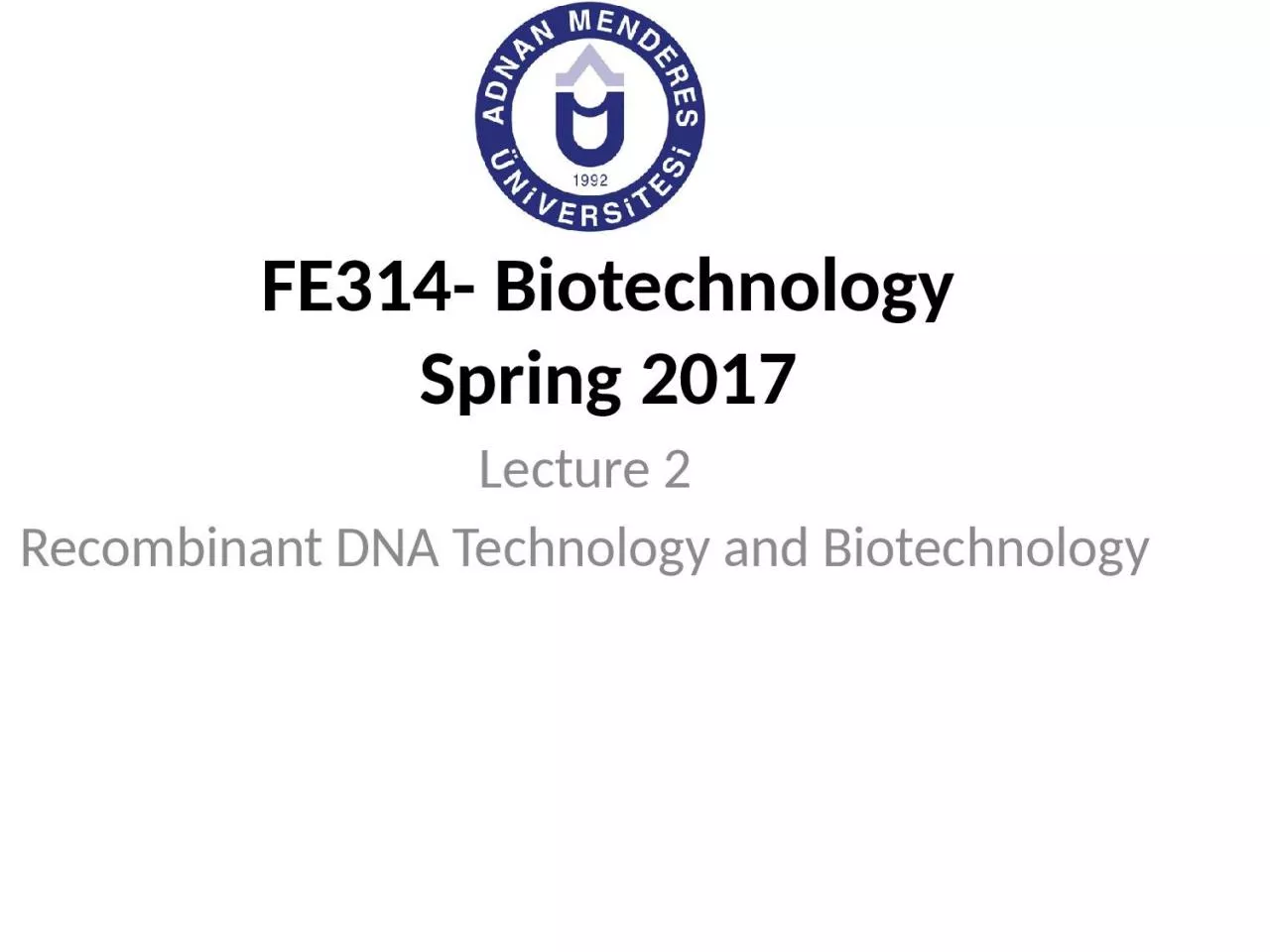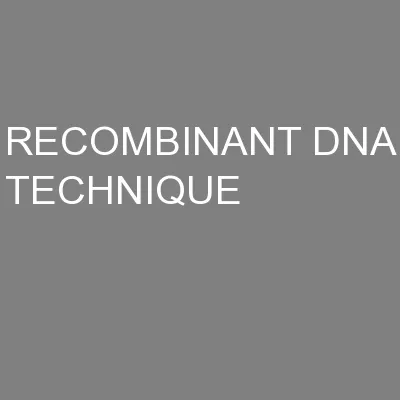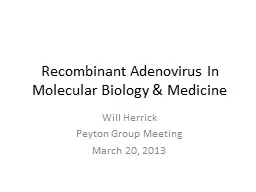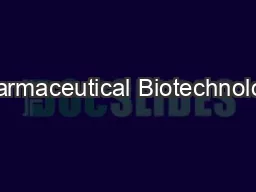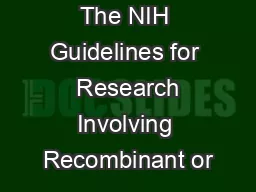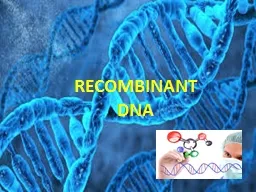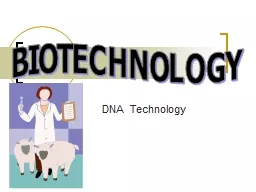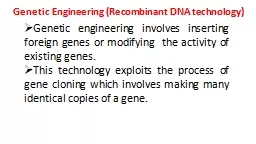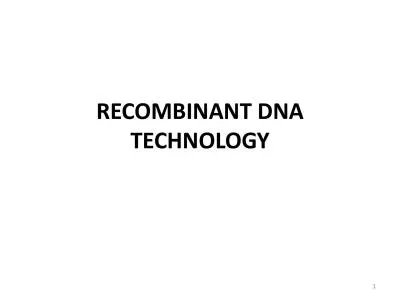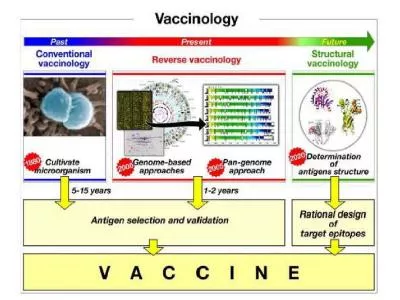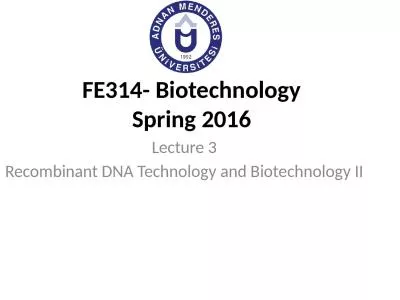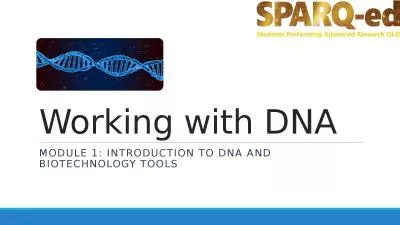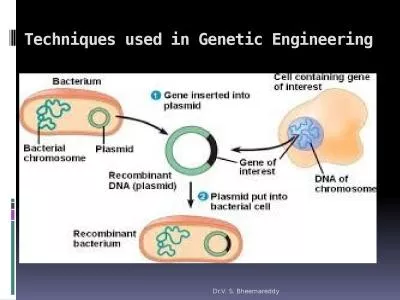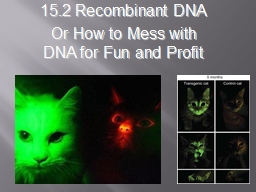PPT-Lecture 2 Recombinant DNA
Author : gelbero | Published Date : 2022-06-08
Technology and Biotechnology FE314 Biotechnology Spring 201 7 Technique of manipulating the genome of a cell or organism so as to change the phenotype desirably
Presentation Embed Code
Download Presentation
Download Presentation The PPT/PDF document "Lecture 2 Recombinant DNA" is the property of its rightful owner. Permission is granted to download and print the materials on this website for personal, non-commercial use only, and to display it on your personal computer provided you do not modify the materials and that you retain all copyright notices contained in the materials. By downloading content from our website, you accept the terms of this agreement.
Lecture 2 Recombinant DNA: Transcript
Technology and Biotechnology FE314 Biotechnology Spring 201 7 Technique of manipulating the genome of a cell or organism so as to change the phenotype desirably What is recombinant DNA . Recombinant DNA Technology. T. echnique that allows DNA to be . combined. from different sources. DNA code universal. Foundation of genetic engineering. Review. What are enzymes? What function do they serve?. Objective. Students will model the process of using restriction enzymes and plasmids to form recombinant DNA.. Background Information. major tools of recombinant DNA technology are bacterial enzymes called restriction enzymes.. Will Herrick. Peyton Group Meeting. March 20, 2013. What Are Adenoviruses?. Linear . dsDNA. virus. 80-100 nm. Nonenveloped. Icosahedral structure:. 1: penton . capsomeres. 2: . hexon. . capsomeres. Introduction. Lecture 1. Biotechnology. It implies with the use of microorganisms, plants, animals or parts of them for the production of useful compounds.. Pharmaceutical biotechnology. It is concerned as the biotechnological manufacturing of pharmaceutical products. . Synthetic . Nucleic Acid Molecules . (NIH Guidelines). Northern Arizona University. Office of Regulatory Compliance. Shelley Jones, Director of Biological Safety. Shelley.Jones@nau.edu. 928-523-7268. Definition. Steps . Applications. INTRODUCTION. Recombinant DNA. (. rDNA. ): . . DNA. molecules formed by laboratory methods of . genetic recombination. (such as . molecular cloning. ) to bring together genetic material from multiple sources, creating . BIOTECHNOLOGY. What. . is. . biotechnology. ? . Biotechnology. = . bios. (. life. ) + logos (. study. . of). Literally. ‘. the. . study. of . tools. . from. living . things. ’. What. . Genetic engineering involves inserting foreign genes or modifying the activity of existing genes. . This technology exploits the process of gene cloning which involves making many identical copies of a gene. . TECHNOLOGY 1 Objectives • Recombinant DNA • Probes • Restriction map • Gene cloning • Gene library • Cloning vectors • RFLP • DNA Fingerprinting • DNA foot printing • Genomic impri great promise, and several types are being tested in. Humans. • DNA vaccines take immunization to . a new. technological. level. • . These vaccines dispense with both the whole . organism and . Technology. . and. . Biotechnology. II. . FE314. -. . Biotechnology. Spring . 201. 6. Some. . applications. of . recombiant. DNA . technology. in . Biotechnology. *. Diabates-Insulin. . production. Biotechnology: Recombinant DNA and Cloning. Module 1 presentation B. Biotechnology: . Recombinant. DNA and Cloning. Learning intention. Describe the process of making recombinant DNA. Success criteria . Dr.V. S. Bheemareddy. Following . steps are involved in genetic engineering. .. Isolation of desired gene or DNA.. Construction of recombinant DNA. Insertion of recombinant DNA in to host cells. Selection of transformed cells or organisms. Profit. What the heck is recombinant DNA?. Recombinant DNA is what you get when you combine DNA from two different sources.. For Example:. Mouse + Human DNA. Human + Bacterial DNA. Viral + Bacteria DNA.
Download Document
Here is the link to download the presentation.
"Lecture 2 Recombinant DNA"The content belongs to its owner. You may download and print it for personal use, without modification, and keep all copyright notices. By downloading, you agree to these terms.
Related Documents

